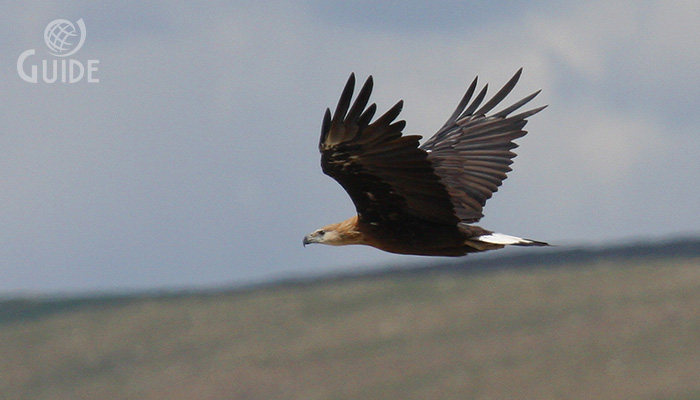
English: White-tailed
Eagle, White-tailed Fish-Eagle, White-tailed Sea Eagle
Russian: Орлан - белохвост
German: Seeadler
French: Pygargue a
queue blanche
Mongolian: Цагаансүүлт нөмрөгбүргэд,
Усны цагаан сүүлт бүргэд
Japanese: オジロワシ (Ojiro-washi)
Body Length: 74-92 cm
Wing span: 193-244 cm
Passage migrant/ summer visitor
Breeding season: May-August
Egg number: 1-3
Egg colour: Slight-glossy dull
white
Brood: 1 per year
Status: Rare species. According to the IUCN Red List categories and criteria,
the species evaluated as-Near Threatened.
Food: fishes and ducks.
Distribution and Range: Russian Federation, Western Europe, Hungary, Romania, Island,
Greenland, Asia Minor, Iraq, and Iran. Southern Europe, Egypt, Indian
peninsula, China, Japan, and Korea. In Mongolia: Breeding visitor, who stays at the
basins of large lakes and rivers i.e., Airag, Khar Us, Khar, Achit, Ogii, and Orog Lakes, the
Onon, Tamir, Shishged, Bulgan, Selenge, Rivers in spring and summers and
occasionally over winters. In the years of 1975-1994 about 30 individuals were
recorded. Recently, the species number has increased in the basins of Uur, Eg,
and Tarbagatai Rivers and their tributaries. Winters at Bogd Mountain, Eg River
Basin.
Habitat: Along large rivers and lakes, rocky cliffs and tall trees where
there is abundant fish and waterfowl.
Population and threats: Population not assessed. Habitat degradation, vandalizing and
destruction of eggs dwindling the population abundance.
Conservation Measures: Included as Rare animal in the Annex to the Mongolian Government
Resolution #7 (2012), CITES, Annex I, CMS Annex I, II, and the Mongolian Red
Book (1987, 1997), the habitat is partially included within the NSPAN.
Further Actions: Assess the species distribution, population abundance,
biological, characteristics, improve the conservation management, and raise
awareness.